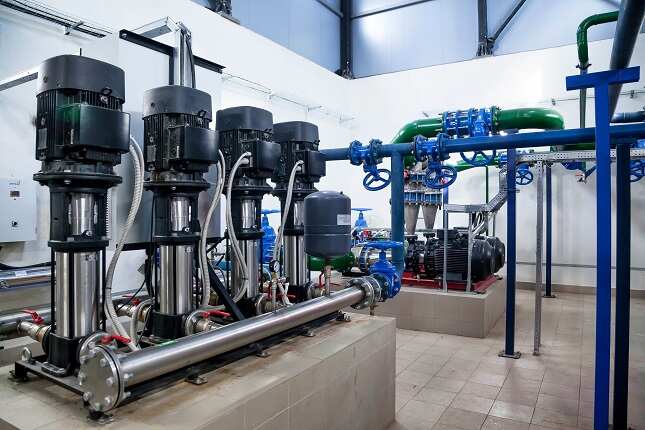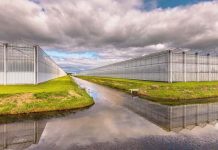In the race to make commercial buildings more energy-efficient, cost-effective, and environmentally friendly, HVAC systems play a starring role. Among the various cooling technologies available today, chilled water systems stand out as a powerful solution for medium to large-scale facilities. These systems are commonly used in office towers, hotels, shopping malls, hospitals, and campuses — places where cooling demands are constant and intense. Their effectiveness lies not only in delivering comfortable indoor climates but also in enabling precise control over energy use and operational efficiency.
As buildings account for a significant portion of global energy consumption, focusing on chilled water systems offers a practical path toward sustainability without compromising occupant comfort.
What Is a Chilled Water System?
A chilled water system is a type of centralized cooling setup commonly used in large buildings. It operates by circulating cold water through a network of pipes, delivering cooling to various air handling units or fan coil units throughout the building. The system typically includes the following core components:
- Chillers: These are the heart of the system, responsible for extracting heat from the water.
- Cooling Towers: Used to release the extracted heat to the outside environment (in water-cooled systems).
- Pumps: Circulate the chilled water and condenser water through the system.
- Air Handling Units (AHUs) / Fan Coil Units (FCUs): Distribute cool air within interior spaces.
Once the chilled water absorbs heat from the indoor air, it returns to the chiller to be cooled again — creating a continuous loop of thermal exchange.
Why Chilled Water Systems Are Ideal for Commercial Buildings
1) Scalability
Chilled water systems are designed for large spaces where packaged or split-unit air conditioning wouldn’t be practical or efficient. Because they are centralized, they can scale up or down to meet varying load demands across a wide footprint.
2) Energy Efficiency
One of the main reasons commercial building managers choose chilled water systems is their energy-saving potential. When properly designed and maintained, these systems can deliver high energy efficiency ratios (EERs), especially when combined with variable speed drives and optimized controls.
3) Zoning and Load Flexibility
Different areas of a commercial building may have different cooling requirements. Chilled water systems allow for zoned cooling, meaning you can direct more or less cooling to specific floors, rooms, or zones based on occupancy or time of day. This reduces unnecessary energy use and enhances occupant comfort.
4) Space Savings
Instead of having multiple rooftop units or bulky air conditioners scattered throughout the building, chilled water systems use centralized equipment. This opens up more usable space and reduces visual and acoustic clutter.
5) Long-Term Reliability
With fewer moving parts at the point of use and centralized maintenance, chilled water systems are often more durable and easier to service in the long run. Components like pumps and chillers are designed for heavy-duty, continuous operation.
The Role of Controls and Automation
To maximize the benefits of chilled water systems, modern control strategies are essential. Building automation systems (BAS) monitor and regulate temperatures, flow rates, pressure, and equipment schedules in real time. These controls help fine-tune system performance, ensuring cooling is delivered exactly where and when it’s needed.
Smart controls can also integrate with occupancy sensors and weather forecasts to further optimize performance. For instance, a BAS might lower the chilled water temperature slightly during peak afternoon hours or adjust pump speeds when fewer occupants are present in the building.
Challenges and Considerations
While chilled water systems offer many advantages, they also require careful planning and maintenance to perform optimally.
- Initial Cost: Installation can be capital-intensive due to the need for chillers, piping infrastructure, and control systems. However, these costs are often offset by long-term energy savings.
- Design Complexity: Proper sizing and layout are critical. Oversized systems can lead to inefficiencies and higher operational costs.
- Water Treatment: The water circulating in the system must be treated to prevent scale, corrosion, and microbial growth — which can degrade performance and damage equipment.
- Maintenance Needs: Like any mechanical system, chillers, pumps, and cooling towers require regular upkeep. A proactive maintenance schedule is key to maintaining efficiency.
Sustainability and Environmental Impact
As energy regulations tighten and green building certifications become more desirable, chilled water systems can play a pivotal role in achieving sustainability targets. When combined with renewable energy sources or thermal energy storage, these systems can further reduce a building’s carbon footprint.
Some buildings also use chilled water storage tanks to shift energy use to off-peak hours. By producing and storing chilled water at night when electricity demand is lower, the building can reduce energy use during peak times, easing stress on the grid and cutting costs.
Future Trends in Chilled Water Systems
The future of chilled water systems is being shaped by trends in digitalization, decarbonization, and demand for smarter buildings:
- IoT-Enabled Monitoring: Real-time data collection on flow rates, temperatures, and energy use helps detect issues early and optimize performance.
- AI and Predictive Maintenance: Machine learning models can predict when equipment is likely to fail or become inefficient, reducing downtime and service costs.
- Low-GWP Refrigerants: To meet environmental standards, newer chillers are transitioning to refrigerants with lower global warming potential.
- Integration with Net-Zero Strategies: As more buildings aim for net-zero energy status, chilled water systems will likely be paired with on-site renewables and advanced storage solutions.
Final Thoughts
Chilled water systems may not be flashy, but they are the unsung heroes of efficient commercial buildings. By delivering consistent, customizable, and energy-efficient cooling, they enhance comfort while lowering operational costs and environmental impact.
For facility managers, engineers, and developers aiming to optimize large buildings, investing in a well-designed chilled water system is more than a technical choice — it’s a strategic decision that balances performance, sustainability, and long-term value. As the built environment continues to evolve, chilled water systems will remain a cornerstone of smart, responsible building design.









































